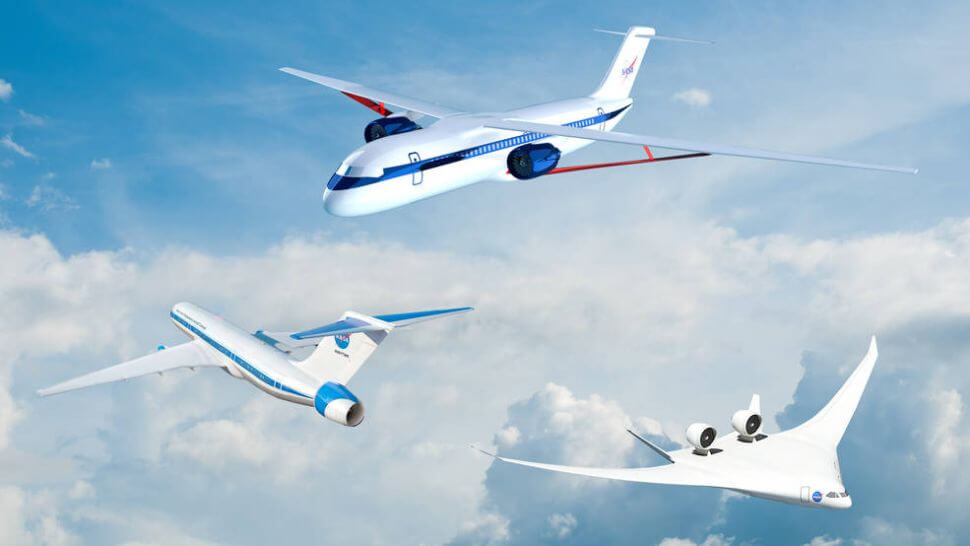WASHINGTON — NASA has unveiled an experimental aircraft they hope will aid in achieving a net-zero aviation emissions goal by 2050. Scientists say it’s a vital step in addressing climate change.
In a partnership with NASA, backed by a $725 million agreement, Boeing will construct, test, and fly a full-scale prototype aircraft featuring extra-long, thin wings supported by diagonal struts — a design known as the Transonic Truss-Braced Wing concept. This new X-plane is anticipated to inspire a new generation of sustainable single-aisle aircraft, the backbone of passenger airlines globally.
Both NASA and Boeing announced that the U.S. Air Force has designated the aircraft, created under the agency’s Sustainable Flight Demonstrator project, as the X-66A.
“At NASA, our eyes are not just focused on stars but also fixated on the sky. The Sustainable Flight Demonstrator builds on NASA’s world-leading efforts in aeronautics as well climate,” says the agency administrator Bill Nelson in a media release. “The X-66A will help shape the future of aviation, a new era where aircraft are greener, cleaner, and quieter, and create new possibilities for the flying public and American industry alike.”
The X-66A is the first X-plane specifically dedicated to assisting the United States in achieving its goal of net-zero aviation greenhouse gas emissions, as outlined in the White House’s U.S. Aviation Climate Action Plan.
“To reach our goal of net zero aviation emissions by 2050, we need transformative aircraft concepts like the ones we’re flying on the X-66A,” says Bob Pearce, associate administrator for NASA’s Aeronautics Research Mission Directorate, who made the announcement at the American Institute of Aeronautics and Astronautics Aviation Forum in San Diego. “With this experimental aircraft, we’re aiming high to demonstrate the kinds of energy-saving, emissions-reducing technologies the aviation industry needs.”
The quest for the X-plane designation began shortly after the announcement of the Sustainable Flight Demonstrator project award earlier this year. The Air Force grants X-plane status to development programs aimed at creating revolutionary experimental aircraft configurations. The designation is for research aircraft and is intended to test designs and technologies for possible integration into other aircraft designs.

“We’re incredibly proud of this designation, because it means that the X-66A will be the next in a long line of experimental aircraft used to validate breakthrough designs that have transformed aviation,” says Todd Citron, Boeing’s chief technology officer. “With the learnings gained from design, construction, and flight-testing, we’ll have an opportunity to shape the future of flight and contribute to the decarbonization of aerospace.”
The Air Force conferred the X-66A designation to an aircraft that verifies technologies for a Transonic Truss-Braced Wing configuration. When combined with other advancements in propulsion systems, materials, and system architecture, this configuration could lead to a fuel consumption reduction of up to 30 percent and decreased emissions compared to today’s top-performing aircraft.
With single-aisle aircraft currently accounting for nearly half of global aviation emissions due to their heavy usage, designs, and technologies for a more sustainable version of this type of aircraft could significantly impact emissions.
NASA’s history with the X-plane designation dates back to the 1940s when its predecessor, the National Advisory Committee for Aeronautics (NACA), created an experimental aircraft program in conjunction with the Air Force and the U.S. Navy. The X-66A is the latest in a long line of NASA X-planes, with NASA’s Armstrong Flight Research Center in Edwards, California, providing technical expertise and support for several additional X-planes.
As part of the Sustainable Flight Demonstrator project, NASA has a Funded Space Act Agreement with Boeing. The agency will invest $425 million over seven years, while Boeing and its partners will contribute the remaining funding, estimated to be around $725 million. NASA will also provide technical expertise and facilities.
The Sustainable Flight Demonstrator project is an initiative under NASA’s Integrated Aviation Systems Program and a key component of the agency’s Sustainable Flight National Partnership, which focuses on developing new sustainable aviation technologies.
You might also be interested in:
- By 2035, airplane passengers could be gazing through moonroofs at sky above
- Eating seafood on your flight? Etiquette expert shares everything you should NEVER do on airplanes
- Jetsons future nearer? $300,000 flying car receives special approval from FAA
- Stunning NASA videos show Earth covered in a soup of carbon emissions
South West News Service writer Dean Murray contributed to this report.

